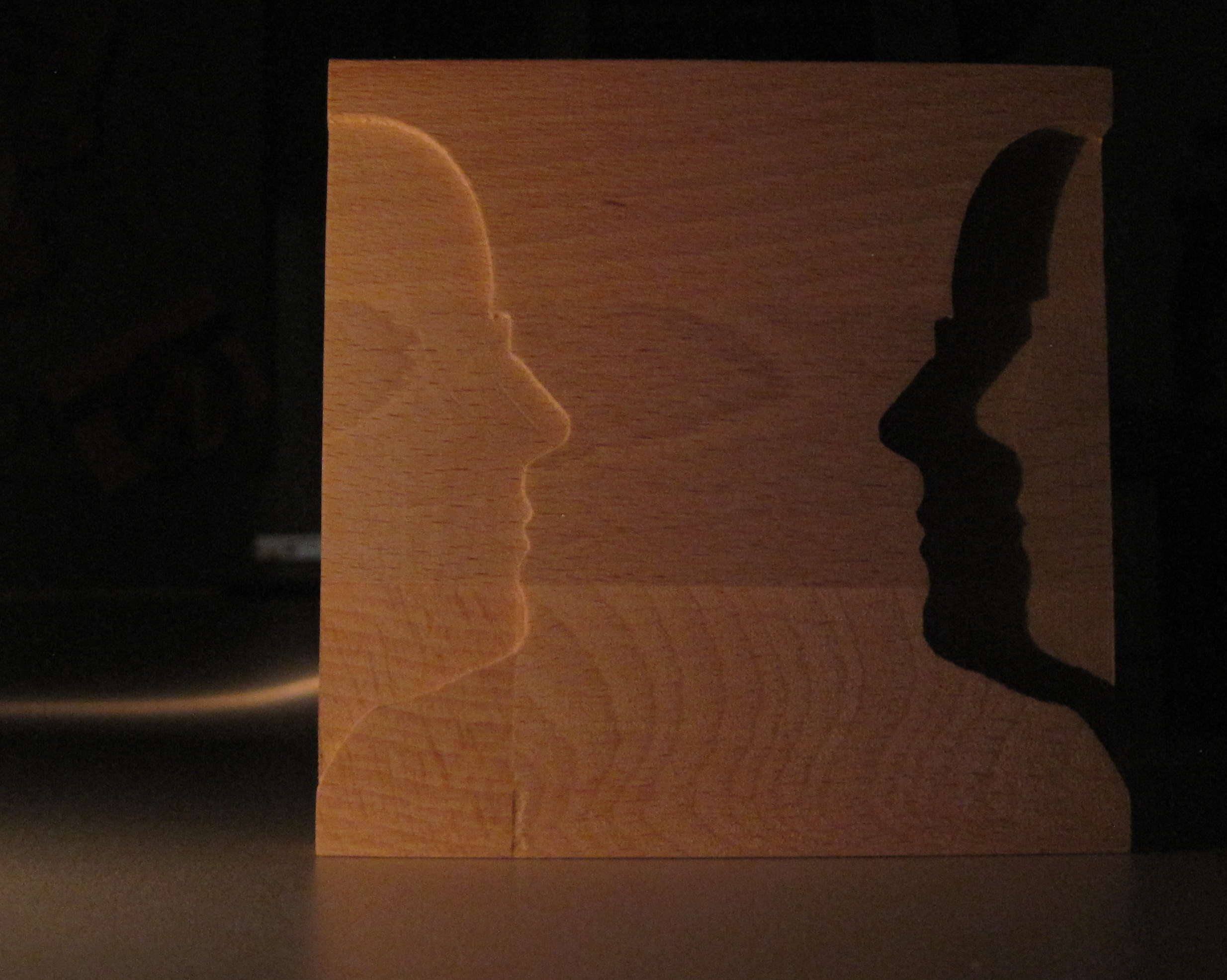This thing does not serve any particular purpose. It is just playing with the silhouette of my wive cut out of wood and a candle for illumination.
Category Archives: CNC
Replacement knob for microwave
I somehow lost the knob for selecting the power of my microwave. It took several iterations but I finally made a new one. It is not winning any prices for beauty, but it works.
It is made out of two parts: The thing that acually plugs into the microwave and a round knob. That way I can replace them idependently when one breaks.
G-code from svg files
Again I spent some time searching for free tools to improve my cnc toolchain. I stumbled upon two simple but helpful flash programs for handling g-code files:
- Makercam (http://www.makercam.com/)
This tool loads svg files and generates g-code toolpaths from it. I can create programs for drilling, pockets, outlines and follow path operations. There are only two things to keep in mind when using it:- The svg file may only contain a single path. However this is not a big problem, because you can create such svg files easily using inkscape. Just combine all paths and then save it.
- Makercam assumes a resolution of 72 dpi when importing a svg file. Inkscape produces files, that have 90 dpi. To fix this open the preferences of Makercam and replace 72 by 90 dpi before loading any svg.
- G-code viewer (http://www.buildlog.net/gview/index.html)
This tool offers a quick way to inspect your g-code files before sending them to a cnc mill. Just drag the g-code file onto the browser window. All rendering is done locally without transferring your file to a server.
G-code from CAD files
I spent several hours searching the internet for a CAM program, that can generate g-code from my CAD drawings. There is a lot of partially functional programs or some for very specific purposes, but nothing really pleasing. Finally I found HeeksCNC (http://code.google.com/p/heekscnc/downloads/list). It has some issues as well, but I like the general concept.The g-code is generated semi-automatic where the user has to define the shapes the machine should process.
If you import models from FreeCAD for example, then the workflow is:
- Import the model
- Move the imported model to the correct position in the coordinate system. The displayed xyz coordinate system is the origin of the CNC machine.
- Select a face of the imported model that defines the outline of a pocket (hole) or a contour of the object.
- Apply a pocket or outline CNC operation to each of the sketches you just created from the imported model.
- Generate the g-code
- Review the machine paths carefully. You have a lot of control on the total machining operations, but you also have to check for plausibility.
Milling PCBs
I built a CNC machine recently and one of the first things to do is of course to improve it. I used fritzing (http://fritzing.org/) to draw my circuit. When I was done I realized that I had no software at hand, that could make g-code from the exported gerber files. After some research I found:
- visolate (http://sourceforge.net/projects/visolate/) for milling the traces
- drill2gcode (http://fablabamersfoort.nl/drill2gcode/) for drilling the hole
I managed to produce a one layered pcb that now drives my CNC machine.


